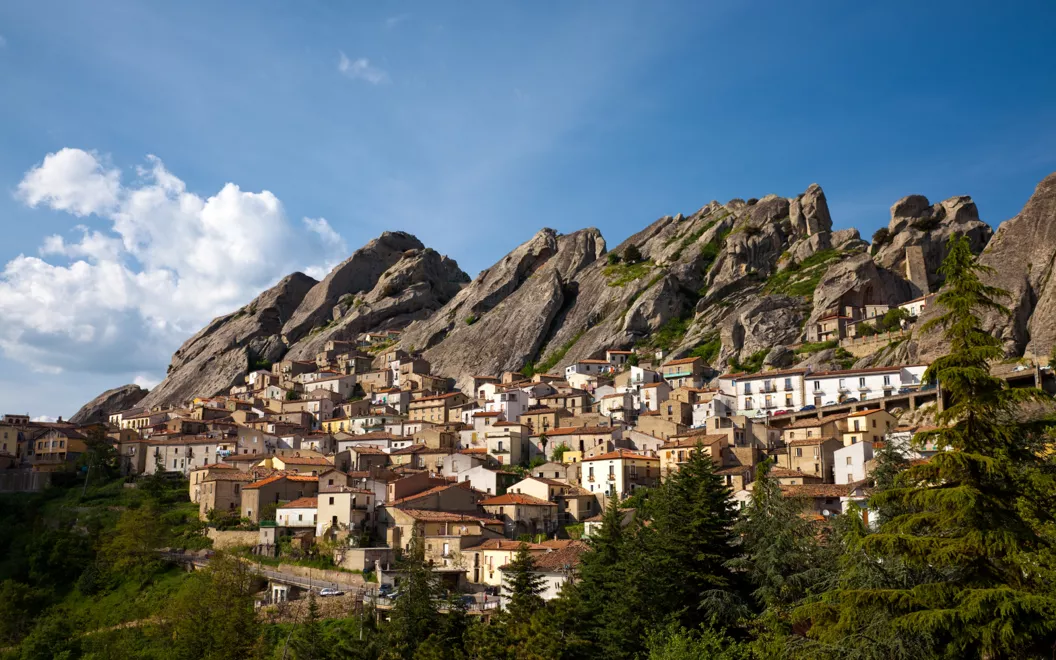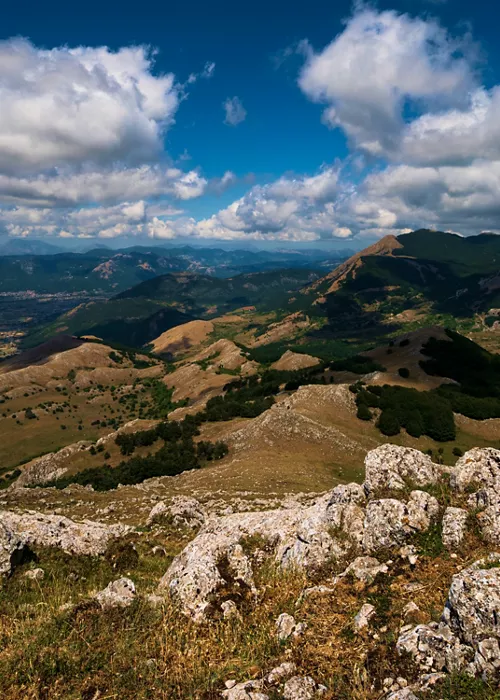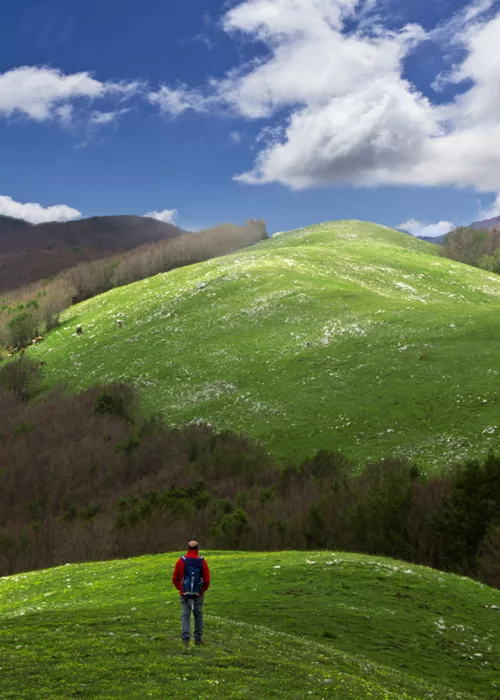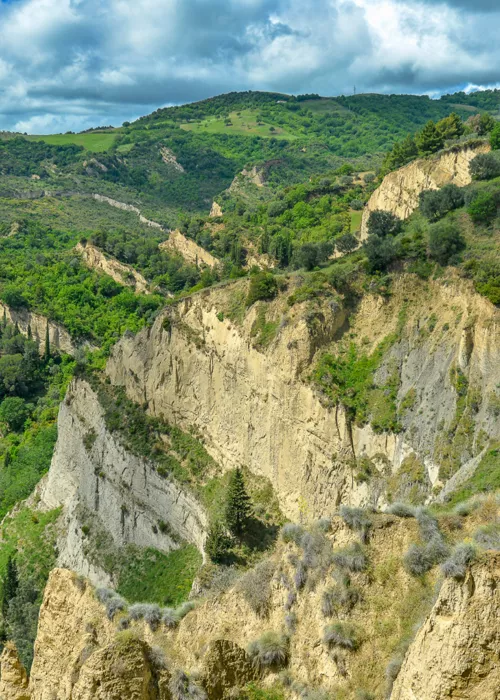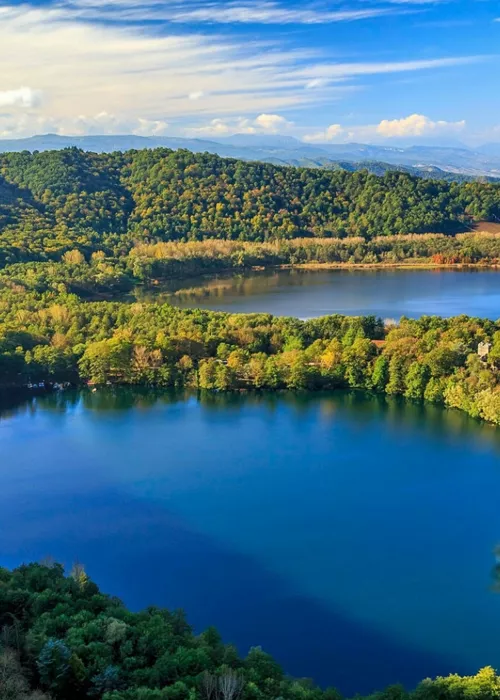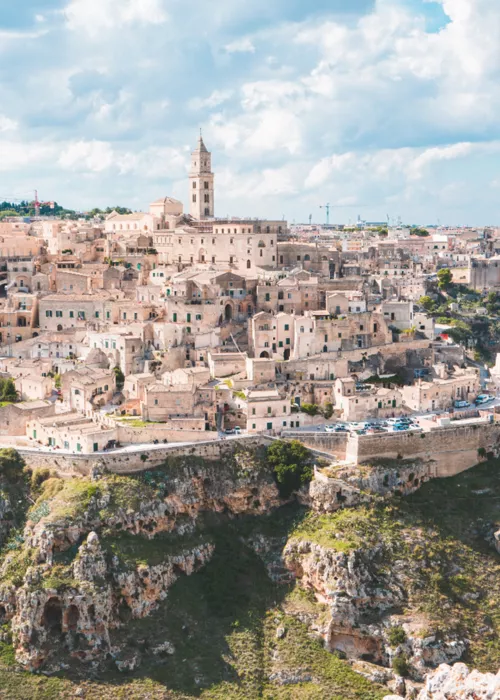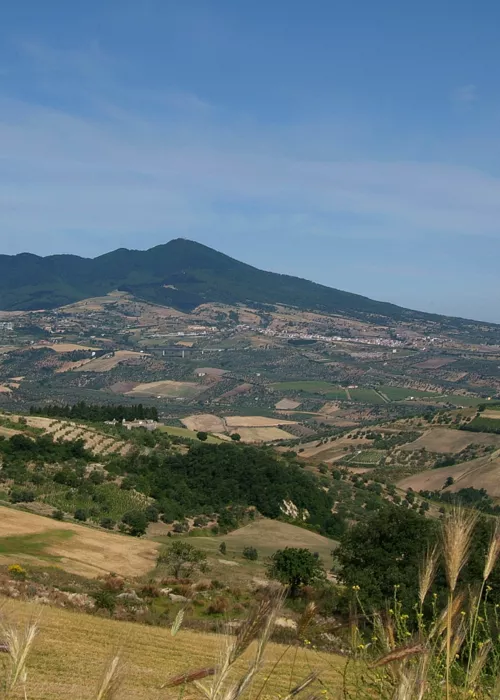Ferrandina

Formerly frequented by Greek settlers, who travelled up the Basento river from the Ionian Sea to trade with the people of the Lucanian hinterland, the village of Ferrandina owes its official establishment, however, to King Frederick of Aragon. King of Naples at the end of the 15th century, Frederick of Aragon chose to give the lands of today's Ferrandina to the displaced people of the adjacent village of Uggiano, devastated during an earthquake in 1456: the name of the town was given in honour of Frederick's father, King Ferrante of Aragon.
Ferrandina welcomes the visitor to a bucolic landscape surrounded by hundreds of centuries-old olive trees. Like many other villages in Basilicata, Ferrandina also lies on a steep hillside: its houses painted white, giving travellers ever-changing views and sights. Ferrandina's tourist appeal is mainly due to the many religious buildings scattered along the streets of its historic centre, such as the monastery of S. Chiara, la chiesa madre and the convent of S. Francesco. Before leaving the village a few kilometres away, you can visit the abandoned remains of the fortified castle of Uggiano, to pay homage to the people who populated the then newly founded Ferrandina at the end of the 15th century.
GallIpoli Cognato Regional Park - Piccole Dolomiti Lucane

From Ferrandina, following the course of the Basento river in the direction of the Lucanian hinterland, after a few kilometres you enter the protected area of the Gallipoli Cognato Piccole Dolomiti Lucane Regional Park. Curious rock formations dominate the landscape of the park. The sharp shape and solemnly vertical appearance of these sandstone spires are now known as the Piccole Dolomiti Lucane and included in the name of the protected area. In addition to these bare rocky peaks, the regional park also offers vast areas covered with dense and majestic forests of oak, chestnut, oak, cherry and maple trees. Especially near Mount Croccia and the Daino-Cervo Wildlife Oasis, a protected reserve dedicated to these two native animals, visitors can choose to dedicate themselves to excursions of various levels of difficulty that immerse themselves in the unspoilt nature of the Basso Basento.
During these walks you may see large native birds such as the king kite and the peregrine falcon, nesting among the rocks or on the foliage of the trees. At the northern end of the protected area, the ruins of Campomaggiore Vecchio deserve a further small detour. In 1885, a terrible landslide covered much of this eighteenth-century village, which today has the fascinating appearance of an abandoned village, to be visited in respectful silence.
Accettura and the Monte Croccia Anthropological Nature Reserve

Monte Croccia rises to 1149 metres in the heart of the Gallipoli Cognato Piccole Dolomiti Lucane Regional Park and is one of the highest peaks in the Lucanian hinterland. On its slopes are the ancient ruins of the settlement of Croccia Cognato, founded between the 6th and 4th centuries BC by the local population of the Samnites, well before the Romans occupied this territory. The Monte Croccia Anthropological Nature Reserve was established around these archaeological remains to preserve their integrity. Visitors can stroll the length and breadth of the paths laid out in the protected area, under the vast forest canopies, discovering caves, megalithic complexes and a large wall.
Moving south from Monte Croccia, you follow a curved and picturesque road for about ten kilometres in the direction of the village of Accettura, whose dense forests are populated by dozens of Podolica cows. The town of Accettura is best known for its May celebrations. It is a rural ritual repeated every year since time immemorial in the period between Easter and the Sunday of Corpus Christi (a religious festival that generally falls between the end of spring and the beginning of summer). The Marriage of the Trees (Maggio di Accettura) celebrates the ancestral union between a holly, a prickly plant widespread in the Little Lucanian Dolomites, which is "given in marriage" to a monumental Turkey oak, chosen from the fields surrounding the village and transported through the alleys of the village. In the main square of Accettura, the most solemn moment of the rite is that the holly tree is grafted onto the trunk of the turkey oak, as a sign of "marriage" between the two plant species. The May ritual does not take its name from the month of the same name but probably refers to the term "maior", which means "greater" in Latin; the Maggio is also celebrated during different periods of the year in other villages in the district, such as Pietrapertosa and Castelmezzano: that of Accettura is, however, the best known.
From Pietrapertosa to Castelmezzano

The itinerary among the villages living the good life immersed in the protected areas of the Basso Basento continues towards two ancient villages, Pietrapertosa and Castelmezzano: villages very close to each other and both surrounded by the solemn sandstone peaks of the Lucanian Little Dolomites. The winding roads that reach Pietrapertosa and Castelmezzano are rich in panoramic viewpoints, and wedge shyly into the narrow spaces that linger between the rock walls and the course of the impetuous Lucanian streams.
Pietrapertosa is the highest municipality in Basilicata, lying at an altitude of over 1,000 metres. The houses are arranged along natural steps that climb the rocky ridge of the local sandstone. A similar thousand-year-old nativity scene appearance can also be found in Castelmezzano, a village capable of exploiting the steep geography of this area for defensive purposes. Castles, churches and centuries-old convents stand out among the small picturesque paths of Pietrapertosa and Castelmezzano, pulsating hearts of the Gallipoli Cognato Piccole Dolomiti Lucane Regional Park.
Aliano and the Lucanian gullies

Passing the course of the Sauro stream, you arrive at Aliano, a beautiful town surrounded by the fragile clayey peaks and steep gorges of the Lucanian gullies. Among the winding roads that crisscross this region, steep walls of bare rock form a lunar, almost science-fiction-like landscape that can be travelled along several vantage points. Aliano is an excellence in the tourist landscape of Basilicata thanks to the great variety of historical, cultural and naturalistic assets that characterise its territory: which is why the Touring Club Italiano has decided to award this municipality the prestigious Orange Flag certification.
The village develops around its main square, connected by small and large flights of stairs to the rest of the town: Piazza di Aliano seems like a stage perfectly arranged around its geometric centre. The beauty of Aliano struck the writer Carlo Levi, who in the 1930s spent a period of confinement in Lucanian lands during the fascist regime, only to decide many years later to be buried in the village cemetery. To delve into the life and works of this important writer, in Aliano you can visit the Carlo Levi Art Gallery and the Carlo Levi Literary Park.
Craco

From the village of Aliano, continuing eastwards, the very special landscape of the Lucanian gullies continues to fascinate the traveller along small provincial roads immersed in bare and arid nature. Crossing once more the bed of the Sauro stream, now ready to join the waters of the Agri river, we proceed towards the inhabited ghost of Craco. This is another fascinating town in Basilicata that, unlike nearby Aliano, has been left uninhabited for a long time. In 1963, a landslide forced the few inhabitants of Craco to abandon this ancient village, perched on a clay cliff, forever. Since then, time has crystallised in the alleyways of this grim hilltop that stands out against the Lucanian sky.
In Craco, you come to immerse yourself in the concept of immobility: far beyond what still appears to the eye, in Craco, it is that which no longer exists that surprises the traveller. You let your mind wander freely to imagination and memories near and far, from the top of this floating island that dominates the whole of Basilicata from above.
Metaponto

This travel itinerary that has followed the bed of the Basento river could only end at its mouth. Just enough time remains for one last stop of great charm and historical importance: the ancient city of Metaponto, just a few metres from the shores of the Ionian Sea. Located at the end of a large and fertile alluvial plain, where vegetables and fruit are produced in large quantities, Metaponto was founded around the eighth century BC by a group of settlers from the nearby Peloponnese peninsula. The Greek settlers of Metaponto were looking for metal and other raw materials along the Ionian coasts and aimed to open trade routes with the Lucanian populations of the hinterland. Over the centuries, the city of Metaponto acquired a strategic importance for trade on the Ionian Sea thanks to its river port on the Basento.
Even today, we can visit substantial archaeological remains of that flourishing city, inside a beautiful park open to the public. Pagan temples and shrines were arranged along the main arteries of the ancient Metaponto. The imposing columns of the sanctuary of the Palatine Tablets can be admired in all their beauty, surrounded by other fascinating ruins, such as those of the city's Greek theatre. The remains of another temple, known as the Sanctuary of San Biagio della Vinella, deserve just as much attention: the therapeutic waters of a local spring flowed here. The Ionian beaches that bathe Metaponto and its surroundings are a favourite destination for residents and travellers in fine weather: a dip in the sea is the ideal culmination of this Basso Basento itinerary.


